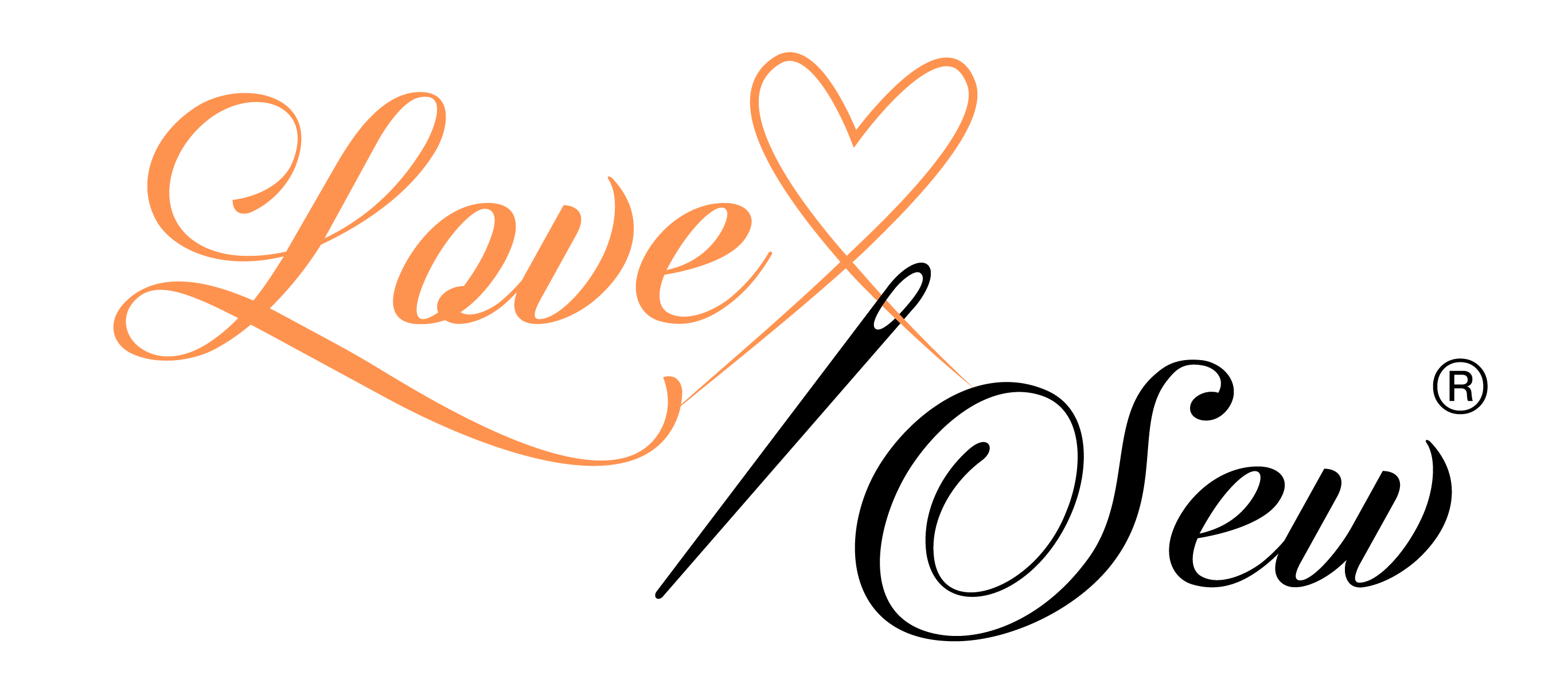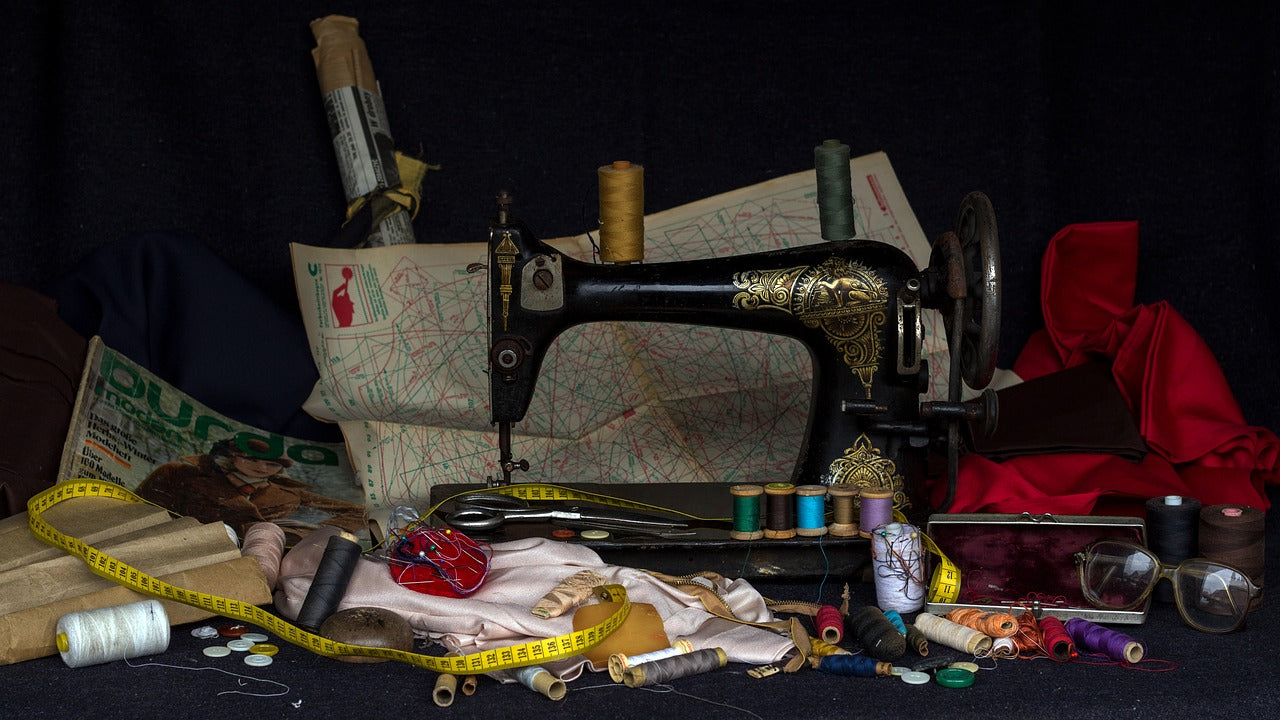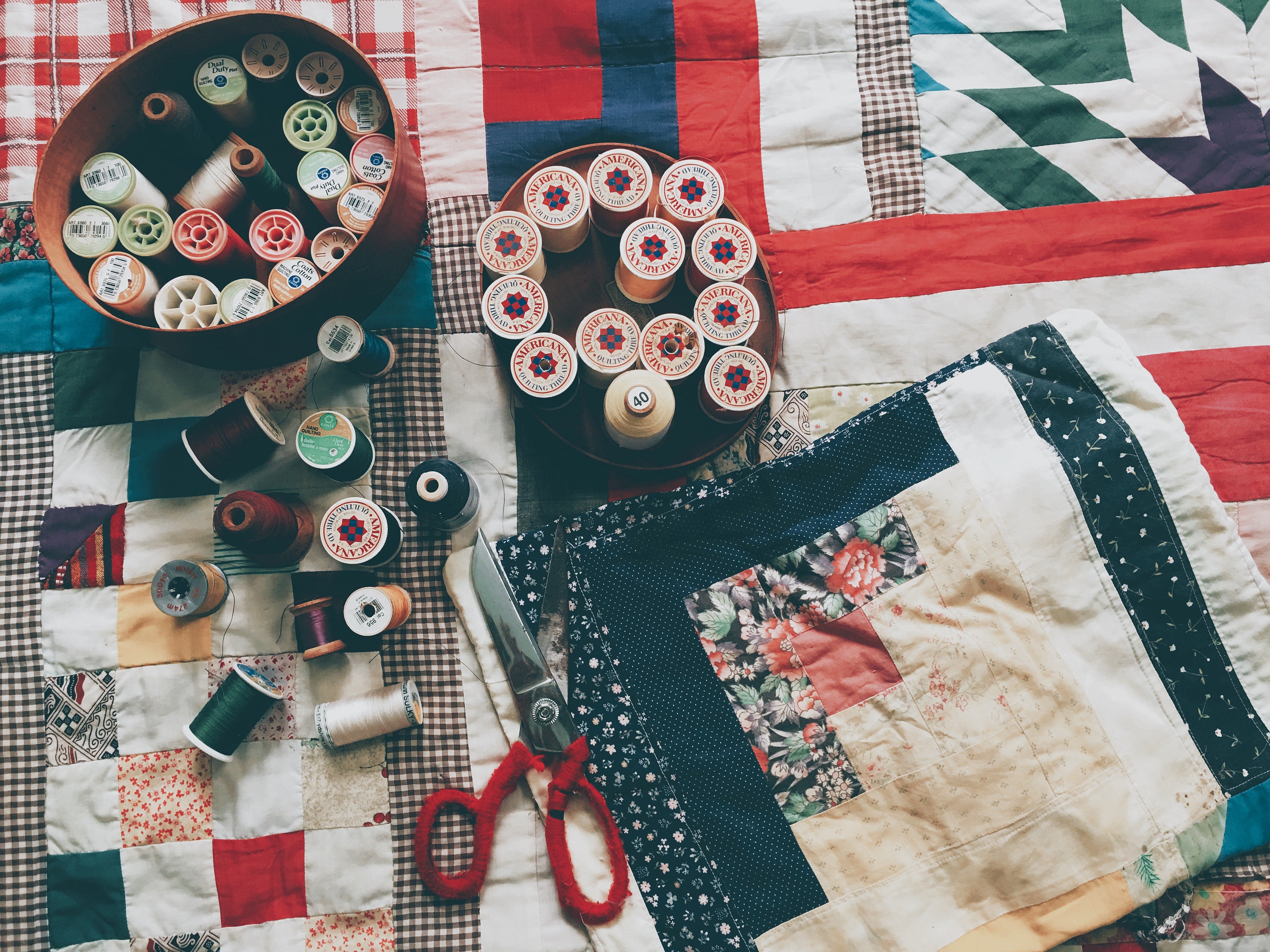If you’re just beginning your sewing journey, you may be intimidated by the seemingly complex machinery of your sewing machine with tons of gears and compartments to contend with. And what the heck is a bobbin?
There are a lot of moving parts, but once you understand the basic mechanics, it isn’t as complicated as it seems and you’ll be stitching with ease.
In this article, we’ll go over the key elements of a sewing machine and break down the main mechanisms that power it.
The Main Parts of a Sewing Machine
Before we go any further into the inner workings of the sewing machine, you need to be familiar with the building blocks that make it possible for the invention that revolutionized our lives on so many levels to exist. For more details, we have added an index of the key terms above at the end of this post.

Read More: Sewing Machine Buying Guide: 5 Things You Need To Know
For more visual learners, here is a video we love breaking down the mechanics of how a sewing machine works:
|
32pc Ultimate Presser Foot Set Our presser foot set contains 32 of the most popular presser feet designed to help you sew precise lines and add beautiful embellishments. |
|
The Basic Working Principle of Sewing Machines
There are four main mechanisms that will help you understand how the sewing machine functions: the needle mechanism, bobbin and shuttle mechanism, feed-dog mechanism and stitch mechanism.
Let’s cover each of them in greater detail.
1. The Needle Mechanism
The needle mechanism is controlled by the take-up lever and is responsible for raising and lowering the needle.
Essentially, this mechanism is made up of two wheels connected to a crankshaft, which attaches to the needle clamp and the needle. The crank converts the motor’s rotary ( round-and-round) motion into the needle’s reciprocal (up-and-down) motion.
Read More: How to Change a Sewing Machine Needle
Below, you can see a simplified depiction of how the mechanism works:

2. The Bobbin and Shuttle Mechanism
The next key part of a sewing machine is the bobbin and shuttle mechanism.
You can’t make stitches without a shuttle and a hook. The mechanism is powered by gears to rotate a bit faster than the needle.
Read More: How to Thread a Sewing Machine Bobbin
The image below schematically demonstrates how different elements are geared together to make the bobbin and shuttle mechanism work:

|
Spool & Bobbin Organizers Multi-Pack (48pcs) Spool huggers, bobbin holders, and bobbin clamps are created to keep your sewing essentials in one place. |
|
3. The Feed Dog Mechanism
The feed dogs are small teeth that pull the fabric through between the presser foot and the throat plate. The feed dogs ensure that the fabric is pulled through at a steady rate, so all the stitches are even.
This element works by pulling the fabric upwards and forwards at the same time, which happens through two interlinked mechanisms driven off the main shaft.
The feed dog mechanism involves an egg-shaped wheel that makes a lever rock back and forth, which in turn pulls the feed dog from right to left. At the same time, a second crank mechanism moves the feed dog up and down. These two mechanisms work in tandem to pull the fabric through.
Read More: How to End a Stitch When Sewing
The illustration below showcases how all of those parts make up the feed dog mechanism:

4. The Stitch Mechanism
The three internal mechanisms mentioned above all work together so that the machine can make perfect, evenly-spaced stitches. But how does the machine actually make stitches?
The top thread feeds from the spool and pokes through the eye of the needle. The bottom thread feeds from the bobbin. The needle begins high and moves down to pierce the fabric. The needle feeds the top thread through the material to form the next stitch. The top thread must have the correct tension to stop too much thread from pulling off at once.

Next, the needle punctures the material, taking the top thread with it. The bottom thread is held in a bobbin case, also known as a shuttle, which rotates, and has a hook on the end. As the bobbin case rotates, the hook will pass through the loop made by the top thread.
The needle now rises, and the shuttle hook drags the top thread loop around so that it locks around the bobbin thread. As the needle pulls upward, it tightens the top thread and pulls it back off the shuttle hook. The needle pulls the stitch tight, and the process completes over and over to create a line of stitches.
Over to You
Although sewing machines contain a lot of elements, once you get a better grasp of how the basic parts work together, you can use your sewing machine more efficiently, or even identify and fix minor technical problems on your own.
With enough theory to understand the nitty-gritty of its inner workings, it’s time to move on to the practice part.
We offer high-quality sewing tools and gadgets to make your life easier, so head over to our catalogue and see what it has in store for you.
Sewing Machine Parts Index
- Bobbin: The bobbin is a little spool that is wound with thread which make up the underside of a machine stitch. Your sewing machine will either have a drop-in style bobbin or a front-load bobbin.
- Bobbin Case: The bobbin case is where the bobbin sits.
- Presser Foot: The presser foot is a removable pedal that helps keep the fabric in place while you sew. Different types of presser feet are used for different projects and can be swapped out to suit your needs.
- Needle/Needle Clamp: Sewing machines require a special needle to pierce the fabric and make stitches and the needle clamp that holds it in place. Those needles come in a huge variety of different sizes for different uses and can be swapped out based on your fabric’s texture and thickness.
- Throat Plate/Needle Plate: The throat plate, or needle plate, is a metal plate that sits below the needle and the presser foot. The plate has a small opening that allows the bobbin thread to come out and the needle to pass through to make stitches. You may notice that your throat plate has small notches or lines. These serve as a guide for seam allowances and help you sew straight lines.
- Feed Dogs: Feed dogs are small metal or rubber “teeth.” They pull the fabric between the presser foot and the throat plate, so you can stitch in a straight line. The feed dogs also regulate the stitch length by controlling how much fabric passes through at once. When using your sewing machine, guide the fabric with your hands, allowing the feed dogs to pull the fabric through.
- Tension Regulator: The tension regulator is a dial that regulates the tension on the top thread. Setting the correct tension allows the top thread and the bobbin thread to join together in uniform stitches. Your machine will either have a manual dial that you turn to increase and decrease tension or a computerized tension that’s adjusted digitally.
- Take-Up Lever: The top thread passes through the take-up lever, which moves up and down with the needle. Before you place the fabric under the presser foot, raise the lever completely to avoid engaging the fabric with the needle.
- Bobbin Winder: The bobbin winder is used to refill an empty bobbin with thread from the spool so that you don’t need to do that yourself each time your bobbin runs out.
- Spool Pin: The spool pin is a small dowel that holds the spool of thread. Some machines come with multiple spool pins for various types of thread.
- Flywheel: Also known as a handwheel, the flywheel is a knob that raises and lowers the take-up lever.
- Stitch Selector: This allows you to select the type of stitch you want. On older machines, it will be a manual knob. On newer ones, it’ll be a digital selection. There are also stitch-length selectors and stitch-width selectors.
- Reverse Stitch Button: Also known as a back-stitch button, this button allows you to reverse the direction of the stitches. This comes in handy when you’re securing a thread at the beginning and the end of the seam.
- Foot Controller: This is a foot pedal that starts and stops the machine, allowing you to control the speed of your stitches.
- Motor/Motor Housing: Electric sewing machines are powered by small motors. The motor is located in a small motor housing chamber.






2 comments
Mafeya Leah Mogola
How to sewing machine work
Rathnakumara
Its very useful,and very easy to understand
Thank you
Leave a comment
This site is protected by hCaptcha and the hCaptcha Privacy Policy and Terms of Service apply.